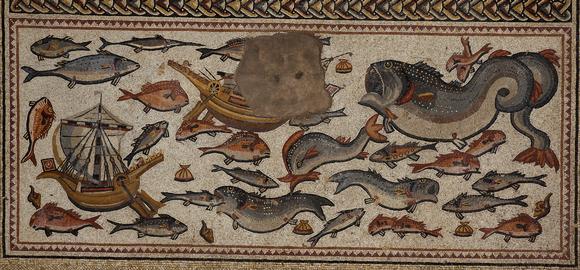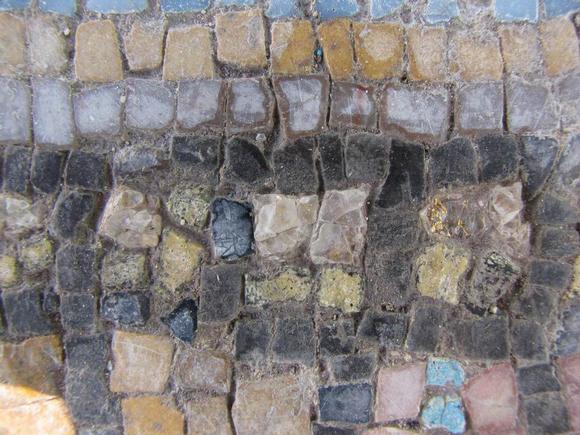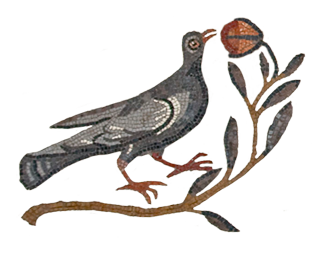Mosaics as an Art Form
The perspective from which scenes on floor mosaics were viewed differed markedly from other forms of two-dimensional art, such as paintings and reliefs. This allowed mosaics to be designed with multiple rather than a single viewpoint. People could walk around and indeed over the mosaic to see scenes orientated in different directions. Figures could as a result be depicted as floating against a minimal background, which was ideal for heavenly divinities or sea creatures, as in the case of the marine panel of the Lod Mosaic.

Another feature of mosaics that adds to their appeal is that recognizable shapes and scenes are created not out of painted or carved lines but by the painstaking arrangement of small cubes or tesserae of different colored stone, terracotta, or glass. There is therefore an overall trompe l’œil (trick of the eye) effect in creating naturalistic patterns from unpromising materials in a most unexpected way.  The most impressive examples are in the so-called vermiculatum (wormlike) technique, in which very small cubes measuring no more than 4 millimeters (5/32 inch) on each side were used. Naturally, such mosaics were very costly and so were relatively small in size. They were usually made as separate panels known as emblemata and set in floors of larger-sized tesserae. Entire mosaics could also be designed to provide specific trompe l’œil effects, the most famous of which is the asarotos oikos (unswept room) mosaic attributed to Sosos of Pergamon. Discarded remnants of a meal are realistically depicted on a plain floor of white tesserae, thereby playing tricks on the viewer and encouraging him or her to appreciate the three-dimensionality of a two-dimensional floor surface.
The most impressive examples are in the so-called vermiculatum (wormlike) technique, in which very small cubes measuring no more than 4 millimeters (5/32 inch) on each side were used. Naturally, such mosaics were very costly and so were relatively small in size. They were usually made as separate panels known as emblemata and set in floors of larger-sized tesserae. Entire mosaics could also be designed to provide specific trompe l’œil effects, the most famous of which is the asarotos oikos (unswept room) mosaic attributed to Sosos of Pergamon. Discarded remnants of a meal are realistically depicted on a plain floor of white tesserae, thereby playing tricks on the viewer and encouraging him or her to appreciate the three-dimensionality of a two-dimensional floor surface.

Regular-sized cubes however did not lend themselves to representing complex figural scenes, especially when the distance from which they could be viewed was limited. On the other hand mosaics placed on a floor were ideal for making repetitive geometric patterns. Early pebble mosaics were often based on a simple checkerboard pattern of alternating black and white squares, but in Roman times there developed an extensive repertory of non-figural designs incorporating geometric and floral patterns. Some of these are very ornate and intricate, and they often served as borders for major figural scenes, rather like the way in which famous European oil paintings have ornate frames. But the most successful and striking designs are those that cover the entire floor with purely abstract patterns. This is an aspect of mosaics that is quite exceptional in ancient art, which was otherwise very much based on realism and the human form. The appeal undoubtedly was that a mosaic comprising an interlocking grid of lozenges in contrasting colors gave the impression of three-dimensional space.

Mosaics are highly characteristic of the Roman world and provide valuable information about the tastes and preoccupations of at least the well-to-do who commissioned their production. They may also offer insights into other ancient arts that were less permanent, especially easel paintings, textiles, and, most of all, carpets. Their legacy was to the religious art of the Byzantine world and its successors. Whether one admires their artistic or practical qualities, mosaics retain their appeal and are still used today to decorate many public places.




